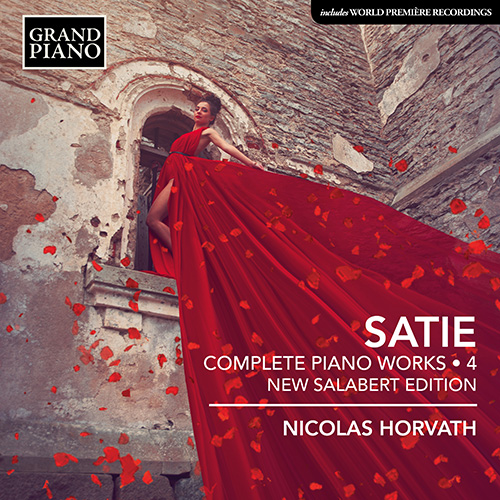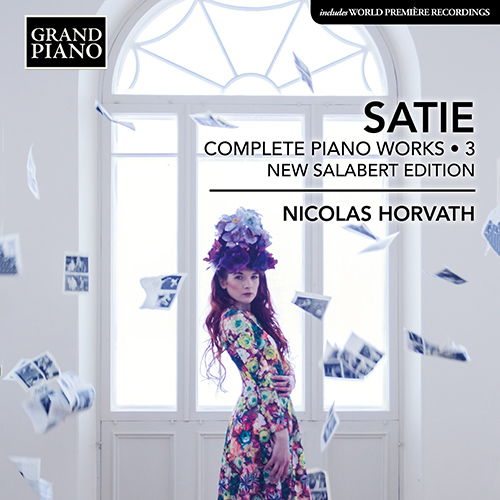ERIK SATIE (1866–1925)
COMPLETE PIANO WORKS • 4
NEW SALABERT EDITION
NICOLAS HORVATH
‘This new volume is full of old favourites and new surprises. Many will be familiar with the melody of Je te veux, but I've decided to perform it in a way that I believe is much closer to the composer's original intention. Satie dedicated it to "the Queen of the Slow valse" so I've slowed down the tempo that people most often hear. I particularly love Tendrement & Illusion, and believe that this music could have been a perfectly fit for the soundtrack of the movie "La La Land." Alongside world premières, other Satie evergreens include Prélude de Mr Mouche, Poudre d’Or, Picadilly and Diva de l’Empire. I hope you enjoy listening to this music as much as I have enjoyed learning and playing them on my own 1905 Erard period piano. Together with a unique booklet full of never-seen-before images and deep detailed text, the journey to discovery is sure to be delightful!’ – Nicolas Horvath

About this Recording
‘Everything I undertake misfires immediately. I produce dirty rubbish and that will accomplish nothing.’ So wrote Erik Satie in 1903 during a period of transition that saw him produce the last of his Rose+Croix style music in Verset laïque & somptueux, but in making a living writing for the music halls, he also created hugely popular songs such as Je te veux. The works on this fourth volume of Satie’s complete solo piano music were written between 1897 and 1906. They include rare theatre music and tender waltzes that contrast with jaunty ragtime and pantomime dances.
(JOHANN SEBASTIAN BACH, 1685–1750) (1906) * (01:17)
(EDITIONS SALABERT, 2016)
TOTAL TIME: 61:59

NICOLAS HORVATH
Nicolas Horvath began his music studies at the Académie de Musique et de Théâtre Prince Rainier III, and at the age of 16 he caught the attention of the American conductor Lawrence Foster. His other mentors include a number of distinguished international pianists, including Liszt specialist Leslie Howard. He is the holder of a number of awards, including First Prize of the Scriabin and the Luigi Nono International Competitions. He has become noted for hosting concerts of unusual length, sometimes lasting over twelve hours, such as the performance of the complete piano music of Erik Satie at the Paris Philharmonie before a cumulative audience of 14,000 people and recently played together with Philip Glass also at the Paris Philharmonie. Nicolas is a Steinway Artist.
Earlier volumes in Nicolas Horvath’s Satie series
– Ritmo ★★★★

|

★★★★
|

★★★★
|
– Classica ★★★★

★★★★
|




